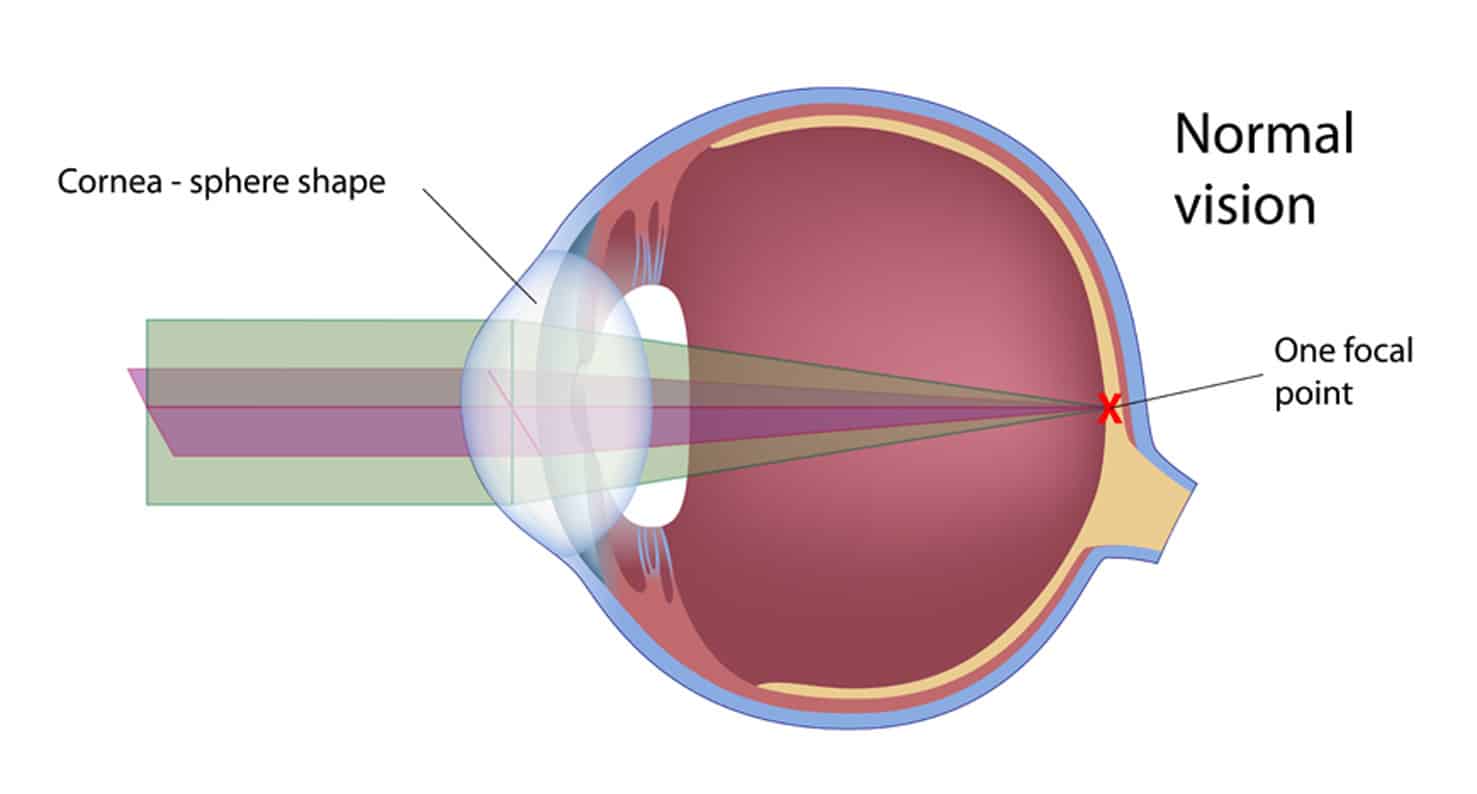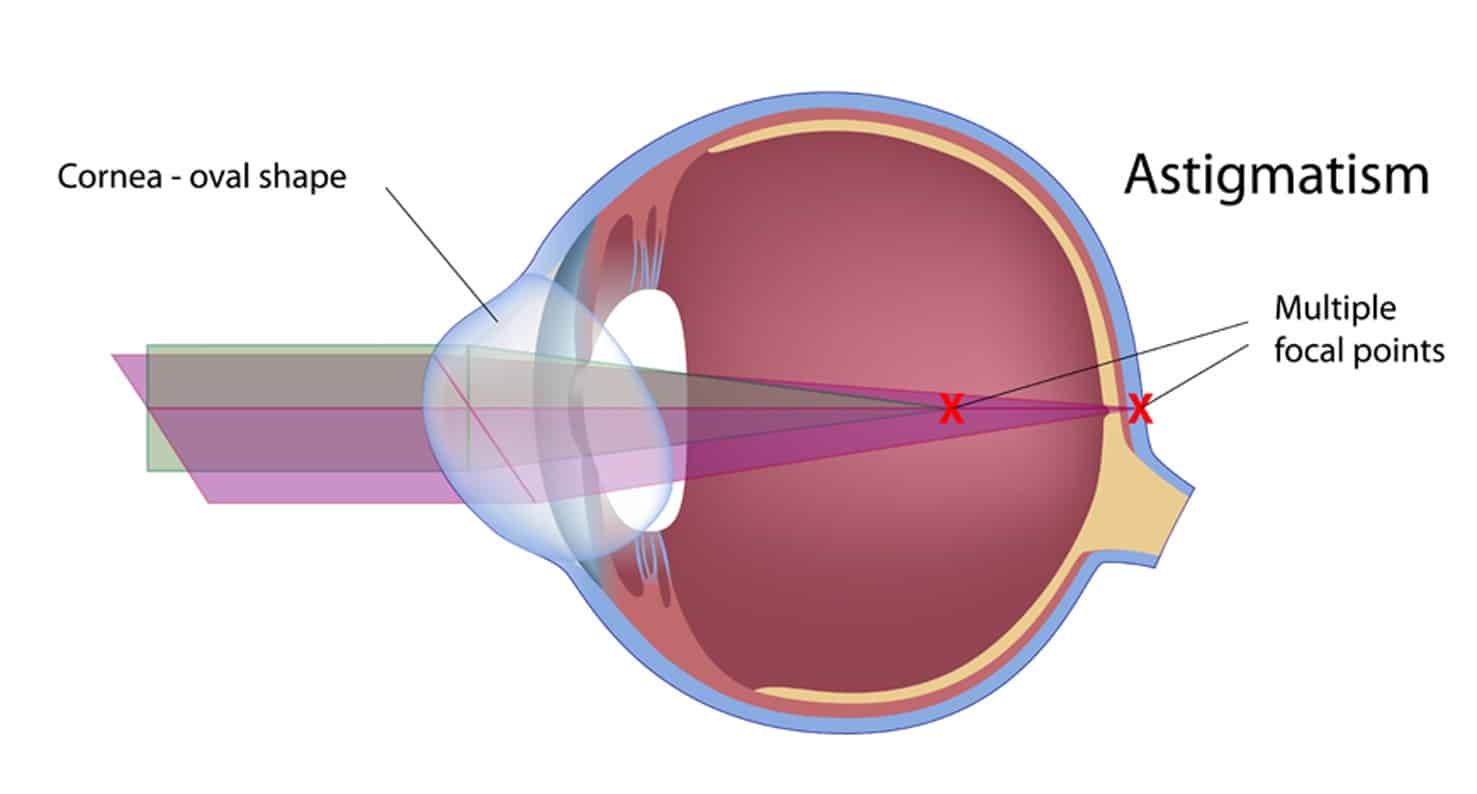What Is Astigmatism?
Published by on December 20, 2018
Understanding Astigmatism and Treatment Options
At Kugler Vision in Omaha, two questions we hear a lot are: “What is astigmatism?” and “Can I still have LASIK if I have astigmatism?” When it comes to this common vision condition, there are plenty of myths and misunderstandings. We are here to help clear those up.
What Is Astigmatism?
Astigmatism is a condition in which objects appear stretched or distorted. Approximately one in every three Americans suffers from astigmatism. Astigmatism can occur simultaneously with nearsightedness or farsightedness.
Common symptoms of astigmatism are:
- Blurry or distorted vision at all ranges
- Headaches
- Eyestrain
- Squinting to see
- Difficulty with night driving
Astigmatism that is severe may have obvious and persistent symptoms. However, it is possible to have mild astigmatism and not know it. This is especially true for young children, who don’t have any knowledge that their vision is anything but normal. Even adults could have mild astigmatism and be unaware of it. It’s important to get a thorough yearly eye exam.
What Causes Astigmatism?
Astigmatism is caused by irregularities in the shape of the outer surface of the eye, called the cornea. The cornea of someone with naturally clear vision is round, like a soccer ball. The cornea of someone with astigmatism is curved more like a football. The football-shaped cornea is steeper in some areas and rounder in others, causing light coming into the eye to be focused inconsistently on the retina, the light-sensitive back of the eye. This inconsistent focus is what causes objects to appear stretched or blurred.


Can LASIK Treat Astigmatism?
One of the most common myths about laser vision correction is that people with astigmatism can’t have LASIK. This was true when LASIK technology was in its infancy, but that was more than 25 years ago. The advanced laser systems of today can effectively treat astigmatism with LASIK and yield excellent results. Check your LASIK candidacy below by taking our quick 60-second self-test.

However, it is still true that LASIK vision correction may not be right for everyone. Luckily, there are actually seven different laser vision correction procedures that can help people achieve independence from glasses and contacts at any stage of life. At Kugler Vision, we specialize in all of them. In fact, there were two technological breakthroughs in astigmatism treatment in 2018 that have made vision correction possible for more people than ever before.

Breakthrough Treatments for Astigmatism
Two new methods for treating astigmatism are ReLex SMILE for astigmatism and the Toric Visian ICL for astigmatism, also called the permanent contact lens. The technologies themselves aren’t new – the ability to use them to treat astigmatism is the recent breakthrough.
SMILE is often recommended as a safe and effective alternative to LASIK for those who are not good LASIK candidates, such as people with irregularities in the surface of the eye. To learn more about SMILE, visit the SMILE section of our website here: SMILE Vision Correction Overview.
The Visian ICL is often called the permanent contact lens. This is a biocompatible lens that is implanted behind the iris, or colored part of the eye, but in front of the eye’s natural crystalline lens. You can’t see or feel the permanent contact lens in your eye. The Visian ICL focuses light sharply on the retina for clear vision. The introduction of the new Toric ICL has allowed the permanent contact lens procedure to effectively treat astigmatism.
Next Steps – Treating Your Astigmatism
Are you ready to treat your astigmatism and leave glasses and contacts behind? If you suffer from astigmatism, the best place to start is a thorough EyeAnalysis consultation at Kugler Vision. Our doctors will analyze your test results, discuss your vision goals and needs with you, and make a recommendation as to which treatment is best for you. To schedule your EyeAnalysis vision consultation with Kugler Vision, or to ask any questions, call us today at 402-558-2211.


Lance Kugler, MD, is a specialist in LASIK and vision correction surgery and CEO of Kugler Vision. A proud Omaha native, he is passionate about improving lives through clear vision. Dr. Kugler serves on several national boards, and his practice is recognized internationally as a center of excellence. Dr. Kugler is one of the original founders of the Refractive Surgery Alliance, an international organization comprised of over 350 of the world’s leading vision correction surgeons; he also served as its first president. In 2019, Dr. Kugler was selected as a TEDx speaker, and delivered a talk in Omaha about the worldwide epidemic of nearsightedness and refractive solutions. Dr. Kugler is an Associate Professor of Refractive Surgery at the University of Nebraska Medical Center’s Truhlsen Eye Institute, has been published in many medical journals, and participates in numerous clinical studies to advance the field of vision correction surgery. Additionally, Dr. Kugler is proud to be a Board Certified Fellow of the World College of Refractive Surgery & Visual Sciences. Dr. Kugler and his wife are proud parents to five active kids. When he has a spare moment, he enjoys skiing, tennis, travel, and fine coffee.






I really like that you point out that it is possible to have astigmatism and not know it, especially in children because they don’t know their vision is anything but normal. My family has a history of eye problems, such as cateracts and astigmatisms. I will have to look for an eye center that can treat these!
Hi David! I’m glad you found the article helpful. It can definitely be tricky for a kid to express that their vision isn’t optimal if they’ve learned to compensate for it and have no idea nobody else is seeing things as blurry and fuzzy. I wish you the best on finding a provider that’s a great fit for you and can help with cataracts and astigmatism. If you’re in the Omaha area, give our team a call at 402-558-2211. Thank you for reading, and have a great day!